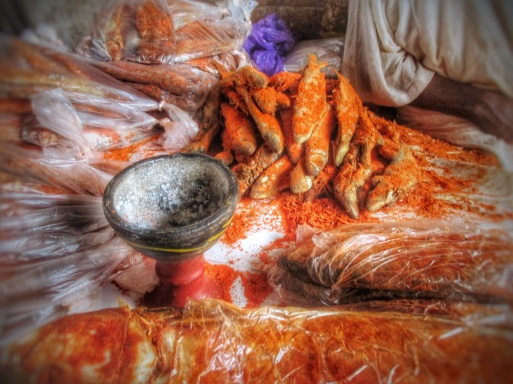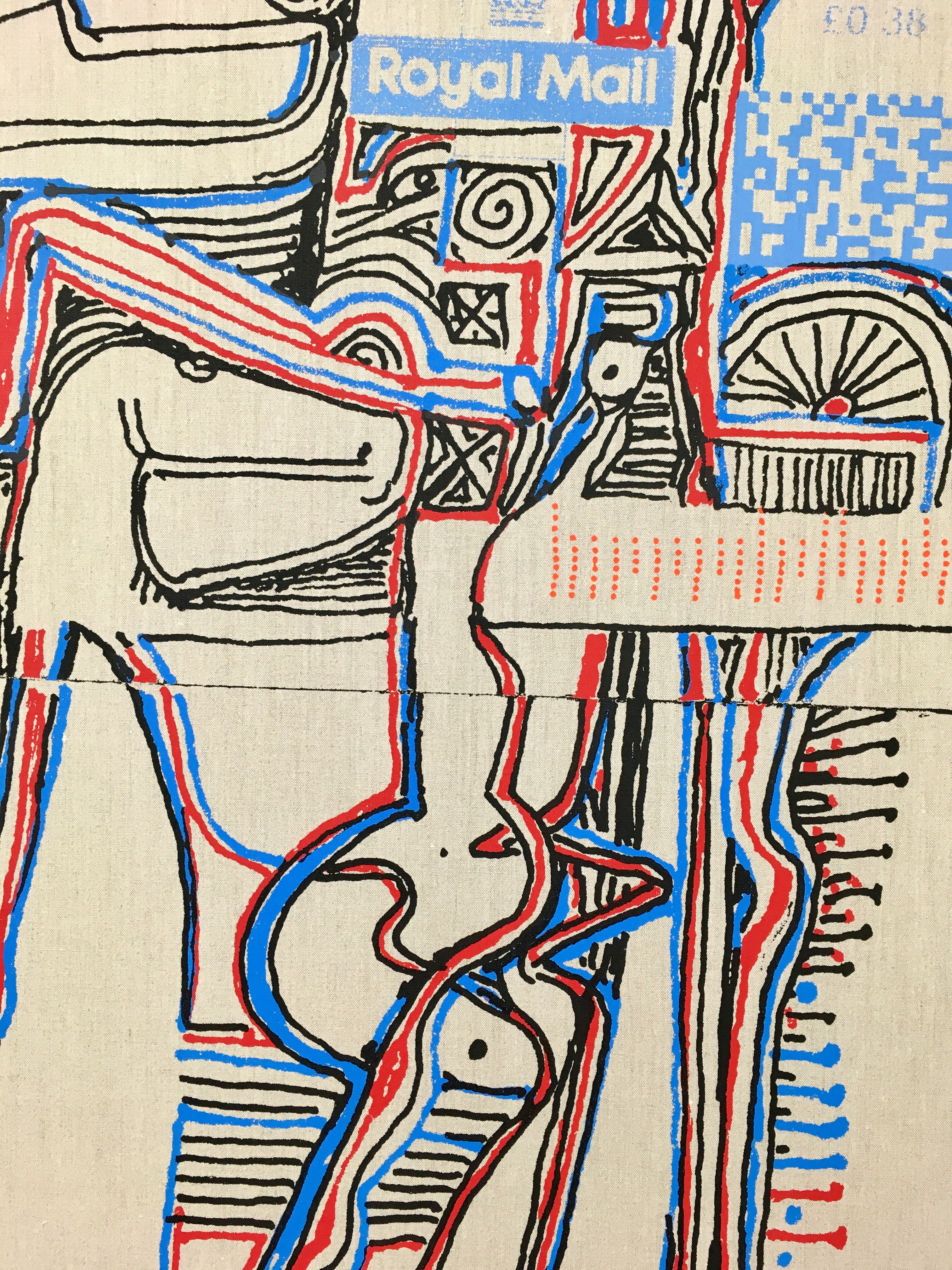
One of our literacy participants with her little boy. Child nutrition, safe food preparation and dietary health are key study themes in our literacy program.

Below, participants sharing a meal they have prepared.

“Two people’s dinner is enough for three” – Sudanese proverb below. The Sudanese are incredibly generous, even when they have very little food, sharing it with visitors, travelers and strangers and expecting nothing in return.
![]()
All photographs of our literacy participants or children in this blog are copyright Imogen Thurbon and may not be reproduced without written permission. You are however welcome to download any other photos in this blog piece.
This is a literacy post for Women’s Education Partnership. See At a Glance and Facts and Figures to learn more about our mission and impact.


Please consider giving to our life-changing work. Just click on the link below to donate quickly and securely:
Nourishing the Next Generation, Creating A Virtuous Circle: Nutrition Literacy in our Literacy Circles
The Context, The Challenges and Nutrition Literacy in Practice

Above, literacy participants discussing local infrastructure and basic foods. Many women in the circle earn extra money harvesting okra.

The Context
“Affected by climate shocks which contribute to inconsistent agricultural production as well as high rates of malnutrition, protracted conflict and persistent economic challenges, Sudan remains low in the Human Development Index, ranking 168 out of 189 countries.” World Food Programme, Sudan
See Heat and Dust for more on how climate change is gravely affecting Sudan’s water and agricultural resources and how our literacy program can help.

Below, children from Jebel Aulia, one of Khartoum’s poorest districts, joining in graduation celebrations at our literacy centre there. Many lack sufficient nutrients in their diets.

Some 2.4 million children suffer from malnutrition in Sudan, with close to 700,000 of those experiencing the most severe form.” (UNICEF). Maternal mortality as well as neonatal mortality is high in Sudan, falling well short of UN’s 2030 Sustainable Development Goals.
Read more here: UNICEF Sudan
Approximately 120 children die every day due to undernutrition and related causes. Read the full article here: 120 Children are killed daily by malnutrition in Sudan
For recent, in-depth geopolitical analysis of Sudan’s food crisis, read Dr. Edward Thomas and Magdi el-Gizouli’s Rift Valley Institute study –
Sudan’s Grain Divide: A Revolution of Bread and Sorghum

A celebratory meal, together with sweets and biscuits made by our literacy participants as part of their two-year program.
Nowadays Sudan has more malnourished girls and boys under five than 30 years ago, due to an increase in prevalence in the past two decades from 20 to 32 % underweight and from 32 to 35 % underweight combined with population growth. (WFP)
Below, one of our literacy participants talking about food and local resources during a literacy session.

Over one in three children U5 (2.3million) are too short for their age (stunted) with rates above 30 percent in 128 out of 188 localities, making Sudan one of the fourteen countries where 80% of the world’s stunted children live. (UNICEF)
Stunted children fail to learn at the same speed as other children and often suffer other health problems.
One in six under-five girls and boys in Sudan are too thin for their height (wasted).
For many Sudanese, finding the money to buy even a loaf of bread has become increasingly hard over recent years. Above, bread delivery boy’s bicycle in Khartoum
Read a tribute to our staff in incredibly difficult circumstances and learn about Sudanese proverbs associated with food and solidarity in Bread and Salt

There is a large decline in people who can afford the local basic food basket, which puts an estimated 2.9 million Sudanese people at risk for nutritional deficiencies. (GlobalCitizen.org)

Participants and their children attending one of our literacy circles, learning skills which will enable them to feed and support their families more autonomously.

The Challenges

Above, Sudanese foods and dishes, including the staple dish of ful beans (centre), lentil broth, fried Nile perch and cured fish (bottom left), sugarcane, doom kernels and Sudanese donuts. Although the Sudanese diet is heathy and varied, many living in poverty on the outskirts of Khartoum cannot afford a varied diet.
See Khartoum Collage for more scenes of Sudanese life and food
Undernutrition in Sudan is a complex, multi-sectorial issue where inadequate dietary intake, lack of dietary diversity – in many areas, for example, vitamin A and iodine deficiencies are rife – as well as problems in food frequency all combine to generate high levels of malnutrition, which in turn impact most severely on the health of mothers and their children. The picture varies across Sudan but in some states “less than 5% of 6-23 month old infants are appropriately fed”, (UNICEF). Kassala, Kordofan and central Darfur lie on the front line of nutrition and food stress.

Spices, gum arabic, dates and other foodstuffs in central Khartoum.
Many of our literacy participants cannot afford nor have access to the range and variety of foods they need for a healthy diet.
While internally displaced people, refugees and returnees are particularly exposed to food insecurity, the on-going economic crisis has had a grave impact on all ordinary Sudanese struggling to find work and to afford basic foods. Food shortages caused by climate change and internal ethnic and political conflict, subsequent rising food costs, growing levels of poverty, increasingly scarce water supplies are also major factors.
Below, children living on the outskirts of Khartoum.

Lack of access to clean water makes maintaining hygiene in food preparation and sanitation even harder in dusty, dirty surroundings where many have no running water or toilet at home. Diarrhea, pneumonia and malaria account for more than 30% of under-five mortality in Sudan and these diseases in turn cause or aggravate malnutrition among the poorest of Sudan’s people. Those already suffering from malnutrition are more vulnerable to these and other serious diseases.

Mother and child attending Al Fatih literacy circle
Marc-Andre Prost, WFP’S deputy head of program in Khartoum emphasizes that how to feed a child is not something a mother knows just because she’s a mother “It’s something that you learn ….primarily from your own mother …. or your own grandmother. Prost’s comments highlight the social and cultural complexities also at play in under and malnutrition in Sudan and the intergenerational nature of the problem. Mothers suffering from malnutrition are far more likely to have children who also suffer from malnutrition.
Early marriage, lack of family planning access and resources as well as customs related to breastfeeding in early months and traditional restrictions on certain foods such as fish and eggs which are beneficial to infant health are factors which also impact negatively on the quality of child and mother nutrition.

Above, a young boy selling sugar cane cubes on the motorway, Khartoum. Our literacy program helps increase awareness of hygiene issues when buying food and explore how to generate income through making food products at home as cooperative ventures.

Please consider giving to our life-changing work. Just click on the link below to donate quickly and securely:

Nuts and seeds seller, Omdurman market. Many of our literacy participants seek out income generating projects involving growing or making food products for sale locally.

Above, one of our participants preparing tea and coffee. See Coffee and Conversation for more on Sudanese coffee and how talking opens doors to empowerment.

Nutrition Literacy – The Virtuous Circle
“They studied the lesson on nutrition. They learned about different protection items like vitamins and minerals and their availability. They discussed the need for proper food with the necessary components for building and protecting the body. They wrote articles about nutrition. They also had dictation on the same topic”.

“They continued with learning about the six childhood diseases – tetanus, tuberculosis, whooping cough, child paralysis, diphtheria and measles. They also learned about the diseases of deficiency of vitamin A. They read an article on the topic”.

“They discussed food production and the available types of food. They talked about the high prices of goods, the lack of job opportunities and low incomes, medical treatment, education and only having one breadwinner in the family. They also held dialogue on how to overcome these problems and introduced some ideas to improve their living conditions. They did role playing for more explanation.”

“They studied malnutrition diseases and related it to poverty as the main cause. They talked about the low incomes which result in shortages and bad quality of food. They learned new words and sentences. They learned simple numeracy exercises”.
Above, extracts from our monthly literacy circles reports.

Above, one of our participants from Jebel Aulia, talking about nutrition with a poster made for the circle by the participants.
As the extracts above indicate, our literacy program takes a highly practical and multi-disciplinary approach to nutrition literacy. Nutrition is a central theme of both maternal and child health units studied in our literacy circles and forms a key part of income-generation work.

Participants attending a food processing course sponsored by local employers.
Our participants share their health worries for their families and learn the skills and awareness they need to break cycles of malnutrition and disease, and that ensure they are using clean water when they are preparing meals. When necessary, our literacy workers will refer participants to health specialists and clinics and we organize talks from local community health experts as well as food preparation and food processing courses to empower participants to set up their own income-generating activities in the food sector.
 Cakes, biscuits and other treats made by our literacy participants far sale locally. Below, A wall poster listing ingredients, quantities and costs for a cooperative food project to generate income.
Cakes, biscuits and other treats made by our literacy participants far sale locally. Below, A wall poster listing ingredients, quantities and costs for a cooperative food project to generate income.

Below, a body mapping activity linking nutrition and dietary health concepts with knowledge of the body and organ functions.

Below, a criteria ranking of foods exercise often used to increase awareness of nutrition issues in our literacy sessions.

Numeracy work also focuses on the prices of basic foods and budgeting skills, as the model basic purchase calendar used in our REFLECT literacy below shows:

There is always so much more which can be and needs to be done but we are slowly making a difference to just some of Khartoum’s most disadvantaged women as one of our participants feels –
“And I learned about healthy food and how to prepare a nutritious meal from cheap ingredients. I thank God, WEP and Samira, our facilitator.”
 Photo: Fasiikh – a popular Sudanese fermented fish dish
Photo: Fasiikh – a popular Sudanese fermented fish dish
يخلق من الفسيخ شربات – يعمل من الفسيخ شربات
“From fasiikh God makes sherbet – from the unpromising and meagre God works wonders”

Please consider giving to our life-changing work. Just click on the link below to donate quickly and securely:


